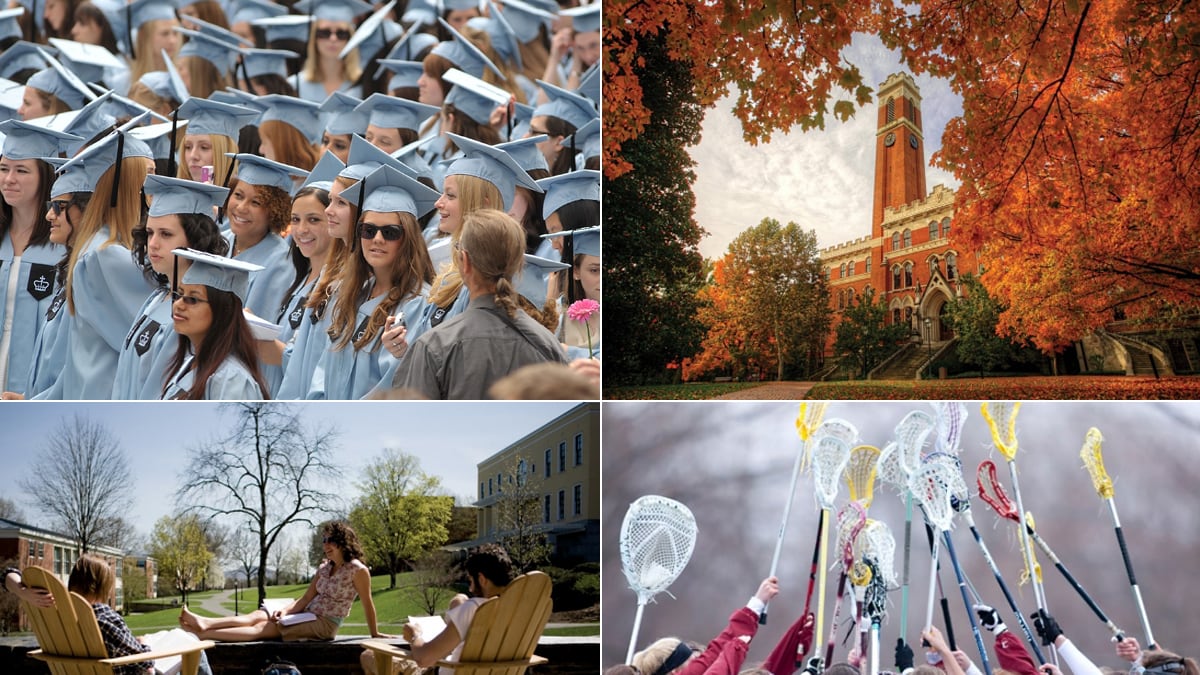Every year, parents pay through the nose for college-admission counselors who will supposedly let them in on the secret to getting into a first-choice school. So let me save you from emptying your bank account and tell you, right now, the single biggest advantage students can easily give themselves for getting into a top university: Apply early decision.
By applying early decision—for which the application deadline is usually Nov. 1, two months before most regular-admission deadlines—the applicant agrees to attend that school should they be accepted. Which means kids can only apply early decision to one school. If the school says yes, so must the student.
Many people don’t know that early-decision applicants get an edge when applying to college. What even fewer know is just how big that edge is. It’s enormous. Applying early admission can often double or even triple your child’s chances of getting into a top school. It is the single most effective admissions strategy there is for most students—and the most underutilized.
Every sign suggests that this year’s college-admission sweepstakes is going to be crazier than ever, and last year’s numbers were positively insane. Six of the eight Ivy League schools had admission rates under 10 percent, as did Stanford, MIT, and a handful of other very specialized schools. But even several dozen colleges that aren’t in the very top tier had regular admission rates under 20 percent. For example, Bowdoin, Emory, and Hamilton all had regular admission rates under 20%. Just five years ago, there were all over 30 percent.
But here’s the big caveat: Those are admission rates for regular applicants. For early-decision applicants, the data look a lot rosier. A couple of examples: Brown reported an overall acceptance rate of 8.7 percent last year, but for kids applying under the regular deadline, their odds were actually worse than that: only about 7.5 percent of them got in. By contrast, a whopping 20 percent of kids who applied early decision received a fat envelope from Brown—one of the most selective schools in the country.

The story repeated itself at other Ivies. Penn accepted just 11 percent of kids who applied under the regular deadline, but more than 34 percent of kids who applied early decision. Cornell was even more dramatic: 16 percent of kids who applied under the regular deadline were admitted, but fully 36 percent of early-decision kids found good news in their mailbox.
This difference was just as pronounced at highly selective non-Ivies. Amherst took just 12 percent of regular applicants but 34 percent of kids applying ED. Midwest powerhouse Northwestern took just 26 percent of the regular pool but 39 percent of the early group. And Bucknell accepted 27 percent of kids in the regular pool, and a staggering 62 percent of early-decision applicants.
Its tempting to chalk up the success gap separating regular and ED applicants to something other than the actual act of applying early decision. Do kids who apply early have significantly better qualifications?
Hardly. In fact, it is often just the opposite. Certain segments of the early-decision applicant pool often have lower grade-point averages and SAT scores than the regular applicants. This is particularly true among college athletes. Because the Ivy League and Division III schools are prohibited from offering athletic scholarships, the tactic favored by coaches at these schools is to build their teams by “encouraging” student-athletes to apply early decision. (Only five of the Ivies—Brown, Columbia, Cornell, Dartmouth, and Penn—use ED.) Coaches can’t guarantee admission—that is the exclusive province of admission officers—but they typically have significant clout.
For the rest of the kids who apply early, the odds are noticeably better as well. Colleges rarely break out the mean SAT scores of kids admitted early compared to kids accepted during the regular round. But the observations of people like Mike Muska, my co-author of Getting In!, and the longtime Dean of College Relations at Brooklyn’s Poly Prep are instructive. “The early decision round is more forgiving than the regular round. They won’t admit a candidate who is not in the ballpark. But they will enlarge the sweet spot. Is it a 20 percent variability? Absolutely. 30 percent? Maybe.”
Why do colleges offer early-decision programs? Simple: competition. Every college is competing with schools both above and below them in the rankings pecking order. And every year they have to get “attractive” kids to apply, and then—the harder part—get those kids they accept to actually show up in September. Early decision is the only way a college can guarantee that an admitted kid will become part of its incoming freshman class.
The following chart shows the percentage of each class that was filled in 2010 by early-decision kids:
The percentage of students who choose to matriculate at a particular school compared to the number who were accepted by that school is known as yield. Every college uses a mix of historical data and newer factors to calculate its expected yield. Did the school play in the Final Four the previous year? Has a particular celebrity enrolled? Was the lavish new $50 million student center finally completed? But in the end, predicting yield is still basically guesswork. Early-decision acceptances help colleges reduce that uncertainty, providing schools a better chance of hitting their target enrollment numbers.
Surprisingly, most kids don’t take advantage of the early-decision option. Last year, more than 245,000 applications were received by the eight Ivy League colleges, but only 21,000 of them were under the early-decision or early-action umbrella. (A very small number of highly selective colleges—like Harvard, Yale, Princeton, and Stanford—offer an “early action” option: apply early in the senior year, and we’ll notify you early. But it is not binding and it doesn’t offer an edge.) Even smaller percentages of kids took advantage of early-decision programs at Amherst, Duke, and Middlebury, all schools that shower love on their early-decision applicants.
So why don’t more kids take advantage of an option that both improves their odds of acceptance and makes the application process a lot less stressful? Three reasons are commonly heard.
First, kids don’t get their act together soon enough. Way too many families begin the college-admission process in earnest at the start of senior year. For most families, that’s too late to do any real investigation of individual colleges.
Second, because of this late start, kids are hesitant to commit to a single school, afraid they’ll choose “the wrong one.”
And third, parents are concerned that they will receive a smaller financial aid package because the school knows that the student has already committed to attending.
The most important piece of advice good college counselors give families is to start the admissions process early. At most top private schools, the college selection process gears up in earnest early in the junior year. That gives families enough time to visit colleges, do substantive research about various places, and engage in a thoughtful sorting process.
By contrast, most public schools don’t start the process with their kids until the beginning of senior year. Moreover, many public school districts have cut back on the number of college counselors. With 300 or more kids per counselor, adequate individual attention is rare.
Kids—preferably with a parent—should visit the three or four colleges they are most interested in as soon as possible. Setting foot on a campus is the single best way to know if a school is a good fit.
Second, making a wrong college choice is not the end of the world. Very often, kids visit colleges, do their research, and take the time to make an informed choice—and then, after a semester or less, figure out the place is wrong for them.
Third, schools are not inclined to squeeze families who have shown them loyalty by applying early. Financial aid decisions are based on need, and the award package from one school shouldn’t be too much different from another—at least not for early-decision kids. In the regular admissions pool however, financial aid offers can be affected as the total bank of available money gets depleted.
Finally, one of the little known secrets about financial aid is that the package offered to families is not engraved in stone. Financial aid officers can exercise what is known as professional judgment. They have some discretion in how much they award and how they craft financial-aid packages. So, fear of a reduced financial-aid package shouldn’t be a deterrent to applying early decision.
One note of caution: use that early-decision application wisely. You only get to pull the trigger once, so the competitive bump shouldn’t be wasted on a school where you have little chance of getting in. If you’re in the ballpark—based on your grades, SATs, and some desired “hook” you’re bringing to that campus—it is worth pursuing early decision. But if you’re a solid B student who can’t sink a basket, consider using that ED bullet somewhere more realistic than a hyper-competitive Ivy.
It is always wise to discuss your ED strategy with the high school college counselor. Many of them will know particular college preferences. For example, the University of Pennsylvania is not hesitant to admit that if you’re a legacy hoping to leverage that edge, you’d better apply ED. Similarly, coaches will tell you that if you don’t go ED, you’ll lose their admission support.
The bottom line? Kids who want to get into a selective or highly selective college should do everything possible to take advantage of the early-decision option. It’s the best arrow in your quiver, so leaving it there unused just seems foolish.





